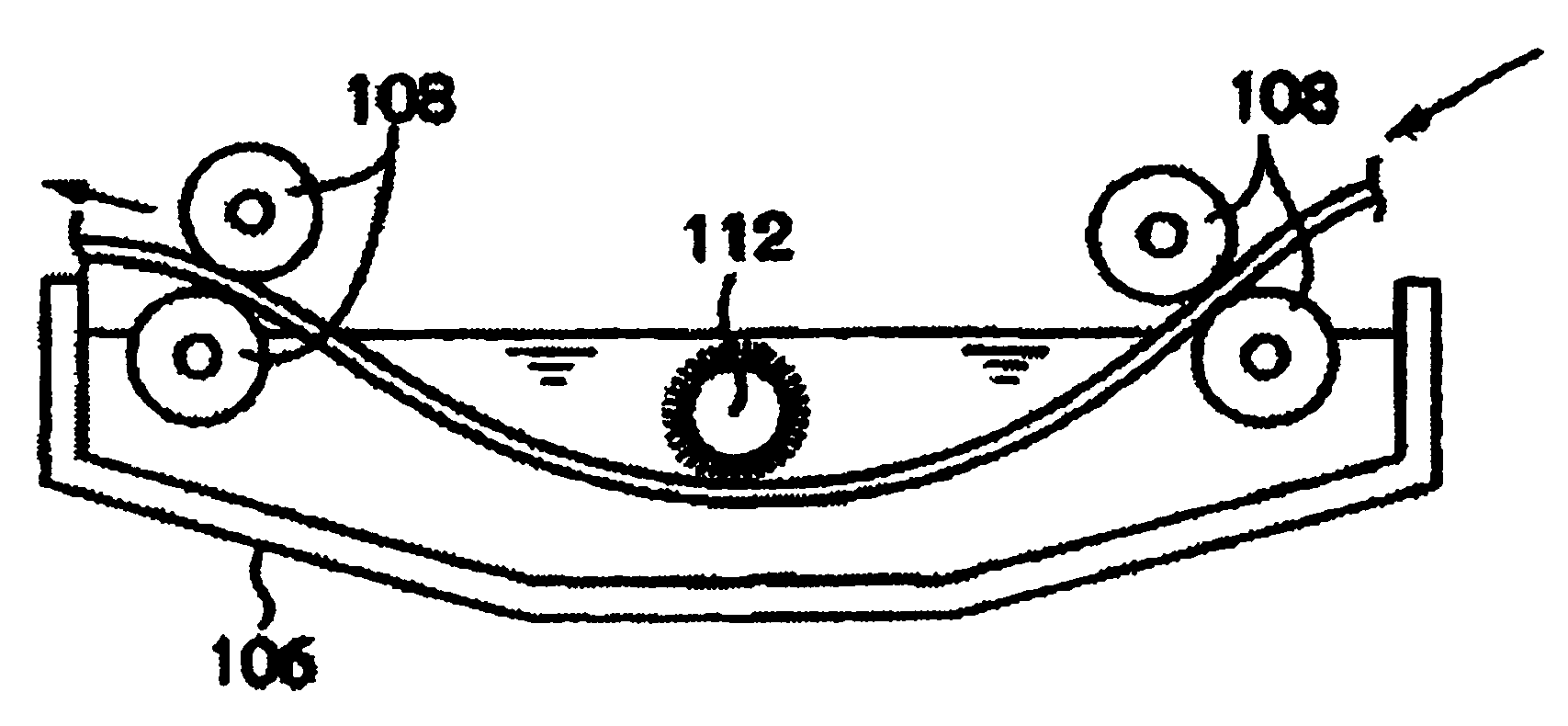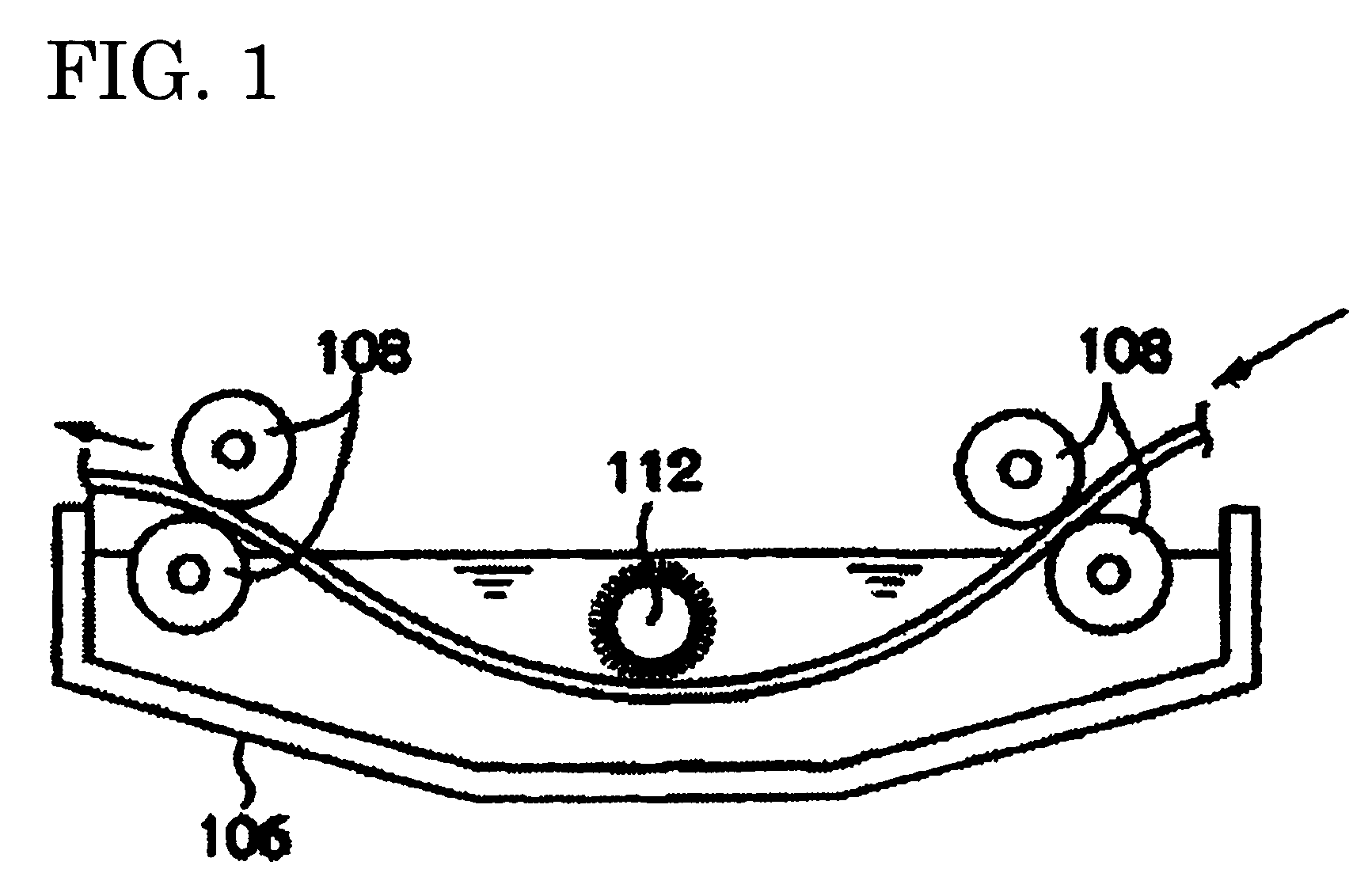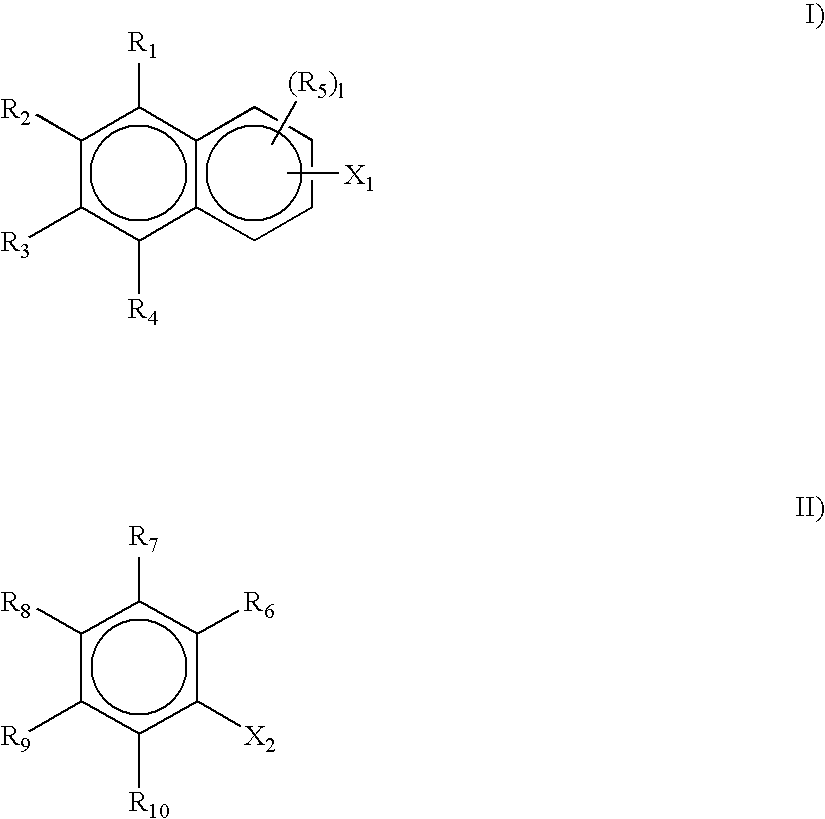Developing solution and method for producing lithography printing plate
a technology of lithography printing plate and developing solution, which is applied in the direction of photomechanical equipment, instruments, photosensitive materials, etc., can solve the problems of large space occupation of automatic development equipment, environmental problems, and serious concerns in the entire industry, and achieve the effects of reducing liquid waste, reducing environmental pollution, and constant quality
- Summary
- Abstract
- Description
- Claims
- Application Information
AI Technical Summary
Benefits of technology
Problems solved by technology
Method used
Image
Examples
examples
[0257]The invention is now described in detail in the following Examples. However, the invention is never limited by them.
Preparation of Support
[0258]So as to remove the calender oil on the surface of an aluminium plate (material 1050) of a 0.3-mm thickness, the aluminium plate was degreased at 50° C. for 30 seconds, using an aqueous soda aluminate solution at 10% by mass (abbreviated as mass % hereinafter). Subsequently, the aluminium surface was sand-dressed with three nylon brushes planted with bundles with bristles each of a capillary diameter of 0.3 mm and an aqueous suspension of pumice of a median diameter of 25 μm (specific gravity of 1.1 g / cm3), followed by thorough rinsing in water. The plate was dipped in an aqueous 25 mass % sodium hydroxide solution at 45° C. for 9 seconds for etching, and was then rinsed in water, followed by dipping in 20 mass % nitric acid at 60° C. for 20 seconds and rinsing in water. The amount of the sand-dressed surface then etched was about 3 g / ...
examples 49 through 57
[0310]The lithography printing plate precursors shown below in the table were placed in an oven within 30 seconds after image exposure, to which hot air was blown against the lithography printing plate precursors for heating the whole surfaces thereof. Then, the lithography printing plate precursors were retained at 110° C. for 15 seconds. The image exposure, development and printing according to the methods described above were done except for the use of the developing solutions shown below in the table within 30 seconds thereafter for development, to evaluate image reproducibility, printing performance and safelight profile. The results are shown below in the table.
[0311]Subsequently, the image reproducibility and printing performance were evaluated by the same method using the same indicators as in Examples 1 through 48 for the evaluation of development and printing performance.
[0312]The safelight profile was evaluated by the following method using the following indicators.
[0313]...
examples 58 through 66
[0318]The lithography printing plate precursors shown below in the table were subjected to image exposure with a semiconductor laser plate setter Violet Vx9600 manufactured by FUJI FILM Electronic Imaging Ltd. (mounted with InGAN-series semiconductor laser emitting beams at 405 nm±10 nm / 30-mW output). Using an FM screen (TAFFETA 20) at a resolution of 2438 dpi, a 35-% plain mesh was imaged at an 0.09 mJ / cm2-exposure dose on the printing face. Using an automatic developer LP1250 PLX manufactured by Fuji Photo Film Co., Ltd., the lithography printing plate precursors were developed within 30 seconds after image exposure. The automatic developer was constituted in a series of a heating unit, a water-rinsing unit, a developing unit, a rinse unit and a finishing unit in this order. Heating with the heating unit was done under conditions of 100° C. and 10 seconds. In all the baths of the water-rinsing unit, the developing unit, the rinse unit and the finishing unit were charged the develo...
PUM
| Property | Measurement | Unit |
|---|---|---|
| pH | aaaaa | aaaaa |
| pH | aaaaa | aaaaa |
| pH | aaaaa | aaaaa |
Abstract
Description
Claims
Application Information
 Login to View More
Login to View More - R&D
- Intellectual Property
- Life Sciences
- Materials
- Tech Scout
- Unparalleled Data Quality
- Higher Quality Content
- 60% Fewer Hallucinations
Browse by: Latest US Patents, China's latest patents, Technical Efficacy Thesaurus, Application Domain, Technology Topic, Popular Technical Reports.
© 2025 PatSnap. All rights reserved.Legal|Privacy policy|Modern Slavery Act Transparency Statement|Sitemap|About US| Contact US: help@patsnap.com



